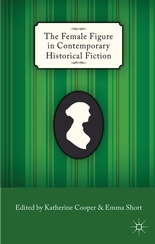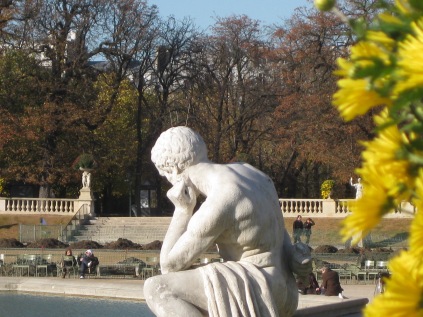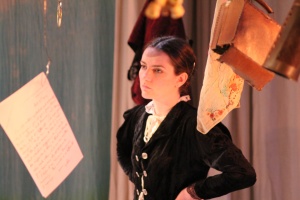January 1, 2013
writing practice

I joined in a conversation with Alice Thompson for a new publication launched last month edited by Katherine Cooper and Emma Short. Here is a short extract from the book about my own approach to writing historical fiction.
I never find it easy to begin writing and am capable of great inventiveness when it comes to displacement activities. The rest of life, emails, even housework, can all seem more urgent and compelling than confronting that opening blank screen. I suspect this fear is more acute for the women of my generation than it is for the men. In my own case this period of not-writing can go on for a worryingly long time. What catapults me out of it is clearing a space in which the only task I give myself is writing, coupled with the realisation that unless I do so the material gathering in my head will evaporate forever.
I always scribble my first draft as quickly as possible. I don’t care where I start and I also don’t worry if some parts of it come out in note form rather than fully fledged sentences. I think of myself as an explorer: I’m writing to familiarise myself with my characters and discover their stories. Trying to polish phrases as I go is therefore pointless, and slows the process down. In her novel To the Lighthouse, Virginia Woolf shows the artist Lily Briscoe struggling with a voice in her head which insists ‘women can’t paint’. Speed can be a powerful weapon against these internal censors. At this stage I give myself unlimited freedom and use research only for inspiration, seldom to check facts.
Once this first draft is done, I put it away for a while before reading it through. Usually it is so rough I don’t even bother correcting it. Instead I draw up a list of what feels alive. My overriding concern is to discover and preserve what the piece is so I can set about writing it. Inevitably, much is pruned. Sometimes I list the elements I now know will comprise my narrative and think about how to order them. This outline can only be provisional because every act of writing introduces new directions and ideas. An important outcome of this first draft is that it will have helped me uncover the ‘voice’ of the piece. With Vanessa and Virginia I allowed myself to be inspired by Woolf’s shimmering, richly allusive prose, but in the novel I’ve just finished the idiom is very different, sparser and more conversational.
Now I have most of the elements I need I can start writing. Although technically this is my second version it still feels like my first, because I open a new document and only occasionally refer back to my original draft. During this stage, I am thinking about the shape and mood of the whole as well as my characters, the way words fall on the page as well as the story. It requires courage and discipline to keep going. I find having deadlines helpful even though they need continual adjustment.
Once this draft is done I am euphoric. Like Lily Briscoe as she finishes her picture, I have the sense some conundrum or tension I was only half aware of has resolved itself. The feeling is short-lived because the reworking that follows is every bit as demanding. I always show a piece to at least one reader before I edit. It reminds me what I have written is no longer my personal affair but must survive the close scrutiny of others. Although I permit myself a great deal of freedom in the early, exploratory stages of writing historical fiction, I am conscious during the editing that I cut or amend anything I know from my research to be beyond the realms of the possible. With Vanessa and Virginia, I removed all but the most minimal alterations to the historical record, and only retained imagined scenarios I felt I could, if required, defend as at the very least highly plausible. This reverence for the past surprises me: it’s not true of all historical novelists, and I never feel constrained in this way if I’m writing a contemporary piece.
Images help me write, and though I work in a tiny office I am surrounded by visual aids. My novel at the moment is set in Paris so I have photographs and pictures of the city up on my walls. [….]

If at all possible, once I have started on a creative piece I write every day. I live with musicians and try to emulate their schedule of regular practice. Writing is like a muscle which gains in strength and flexibility the more it is used. The best way to feed the writing muscle is by incessant reading.
For further details of The Female Figure in Contemporary Historical Fiction, edited by Katherine Cooper and Emma Short, click here
March 1, 2011
Cambridge Virginia Woolf Edition
 Friday saw the launch of the Cambridge edition of the works of Virginia Woolf, a project I have been involved in for the best part of a decade.
Friday saw the launch of the Cambridge edition of the works of Virginia Woolf, a project I have been involved in for the best part of a decade.
I thought I’d give a taste of the work we’ve been doing by presenting some of the findings from one of our two pilot volumes, The Waves.
Scholars have known for a while that Woolf was extraordinarily well read, but our research revealed just how detailed and wide-ranging her literary knowledge was. Virtually every page of The Waves contains at least one, often several, allusions or references to classical authors (such as Virgil and Catullus), Shakespeare, Milton, the Romantic poets (Wordsworth, Keats and especially Byron and Shelley), or Woolf’s contemporaries (in particular her friend T. S. Eliot whom many people believe provided the inspiration for Louis).
Although The Waves has often been thought of as an ‘abstract’ or ‘poetic’ novel, it is deeply rooted in the history and culture of its time. It contains many references to contemporary events. For example, when one of the characters, Bernard, reads in a newspaper that ‘a famous actress has been divorced’, this ‘actress’ can be traced to a living person. The Times lists five divorce cases between February 1929 and May 1931 (the period when Woolf was writing her novel) in which ‘actresses’ are either divorcing, or being divorced by, their husbands; the only one of these to whom the soubriquet ‘famous’ could reasonably be applied is the actress and singer Nancie Lovat (1900–46). Under the title ‘Actress’s Divorce Petition’, The Times of 8 April 1930 reports that ‘Mrs. Nancie Langlands, née Ellis, of Adelaide Road, Hampstead, the actress professionally known as Miss Nancy [sic] Lovat, now appearing in The Damask Rose at the Savoy Theatre, prayed for the dissolution of her marriage with Mr. Cecil Walter Langlands, a trainer of racehorses, on the ground of his adultery with a woman unknown’; the case was ‘adjourned’ in order ‘to give the husband an opportunity of stating the name of the woman with whom he was charged with committing adultery’.
One of our researchers, Dr Ian Blyth, also uncovered a short parody of The Waves written by Richard Mallett for Punch (The London Charivari, 18 November 1931). Entitled ‘The Flames’, this parody sets Woolf’s novel in an unnamed gentleman’s club. The style of the novel’s famous interludes are mimicked in a description of the flames emanating from the hearth in the centre of the room: ‘The fire had just been lighted. It held no warmth yet, except a pale suggestion of warmth, a timid ghost of heat to come. Little yellow flames rippled over the corners and folds of crumpled white paper, browning it, blackening it, consuming it, and then sliding gaily upwards to lick at the long yellow sticks’. In the main sections of the piece, four protagonists, Mr Smith, Mr Brown, Mr Jones and Mr Robinson, are in competition for the best chair in the room—the one closest to the fire:
“I am sitting in the best chair nearest the hearth,” said Mr. Smith. “I am glad they have lighted the fire.”
“I am cold,” said Mr. Brown, “but they have lighted the fire. I shall soon be warm now.”
“I am glad of this fire in a way,” said Mr. Jones, “it pleases me in a way. But it is an extravagance. We in the club will be made to pay for this extravagance.”
“I like to see the yellow light flickering,” said Mr. Robinson, “reflected in the leather chairs.”
Given Woolf’s interest in gender politics, I can’t help thinking this ridiculous portrayal of four men jostling for power would have appealed to her!
I’ll report some more of the edition’s findings for other volumes in future posts.
October 16, 2010
My perfect writing day
There’s a fascinating discussion going on at She Writes about what constitutes the perfect writing day.
Here’s mine.
I wake up having had enough sleep. This is important – if I’ve had one of those nights where it feels as if the world’s traffic has been using my brain as a concourse I can forget about writing.
The day will be with one with nothing else in it. The ‘to do’ list I revise each evening and leave for myself in the centre of my desk will have one word on it: writing.
Tea (strong, with a little milk), a bowl of high-energy cereal, then a brief venture outside. I walk the few steps to the garden gate and peer over it. Two giant Ash trees grow opposite and I watch them for a moment, thinking how Virginia Woolf described taking ideas to her writing hut each morning like a delicately balanced basket of eggs.
If whatever I am writing is already well advanced I start as soon as I get to my desk. If it isn’t – if I am still feeling my way in to the characters and their story – then the process of beginning takes longer. Sometimes all I achieve are notes.
I force myself to exercise at the end of the morning: yoga, aerobics, if the weather is good a walk or run. My reward is lunch which I eat listening to the words in my head, outside if I can.
Unlike most writers I know, I always do my best work in the afternoons, beginning about 2 and working through to 4 or sometimes 5. After this, no matter how well the writing is going, I come to a natural stop. I look forward to my son returning from school, to switching on email and letting the world flood in.
Oh, and my perfect writing day ends with the knowledge that tomorrow will be exactly the same.
January 20, 2010
Writing with the door closed, editing with it open
 After a talk to the Arts Society at Newnham College in Cambridge last night I had an interesting discussion about the differences between literary criticism and creative writing. The talk was to launch a new journal Women and the Arts, celebrating Virginia Woolf’s lecture to the Society in 1928. Woolf later reworked her lecture as her seminal essay A Room of One’s Own.
After a talk to the Arts Society at Newnham College in Cambridge last night I had an interesting discussion about the differences between literary criticism and creative writing. The talk was to launch a new journal Women and the Arts, celebrating Virginia Woolf’s lecture to the Society in 1928. Woolf later reworked her lecture as her seminal essay A Room of One’s Own.
Woolf was constantly in my thoughts as I spoke, not only because I was talking about my fictional account of her life in Vanessa and Virginia, but also because so much of what she said in 1928 about the necessary conditions for exploration and creation remains true today. We still need space (‘a room of our own’) where we can work without interruption; we still need money so we have time to sit in that space.
In her lecture, Woolf was talking partly about women’s writing (which in 1928 was still markedly absent from the literary mainstream despite notable exceptions), but also about all manner of intellectual and inventive enquiry as encapsulated by her two imaginary female scientists, Chloe and Olivia.
But the discussion after my talk was about writing, and specifically about how as critics we learn to focus on a text’s details so our understanding of the way a particular passage or sentence is crafted becomes highly sensitised. This can make it paradoxically harder for us to write creatively since we scrutinize every phrase we put down – and stumble on its flaws. How, a young writer asked me, can we turn off that critical eye so we can launch into the mess and flow of original production?
This is a crucial question and one that isn’t confined to literary scholars. Reading sharpens our appreciation of what words do and this can impede our efforts to write. We all know the pattern. We stall before we’ve decently begun because some negative, querulous voice forces us to revise what we’ve just written – and then revise it again. We get up from a hard-earned session in that ‘room of our own’ because we persuade ourselves we’re too tired, or too preoccupied, or too uninspired to write today.
Woolf has a good answer to this conundrum. She has an image of herself with a devil-angel on her shoulder, detonating her confidence with doubts and contrary thoughts. In Woolf’s case the source of the devil-angel is the Victorian ideal of perfect womanhood – but though that particular goddess no longer stalks us, others have replaced her.
Woolf’s solution is radical. She argues that we must take the point of our metaphorical pens and stab these devil-angels before they destroy any chance we have of writing ourselves.
I agree: we have to do whatever is necessary to quell these disabling voices. We have to build into that ‘room of our own’ permission to write without censorship. We have to create a space where we can experiment, explore, set off into the unknown: somewhere we can make mistakes. Otherwise we will never reach that alchemical point where writing begins to transport us, suggest possibilities we have not thought of, expand the range of what we imagined possible.
This is not the whole story. Whatever writing we produce during our journey has to be reworked. There will be superfluity, confusion and error mixed in to our work, which we will need to eliminate before it sets. We must review what we’ve written and decide how we will communicate it to others.
Which is where that critical eye comes in, trained up by our years of reading. At this point in the process it’s an aid, not a curb. The editing process is a different operation to that early one of exploring and experimenting and calls for a different mindset.
Or perhaps it just requires us to make an adjustment to our room. Stephen King insists we should write with the door of our writing room closed in order to give ourselves privacy and the freedom to embark. He suggests we should open that door when we edit, considering our potential audience as we draw on those finely tuned critical skills. I think this is helpful. At the beginning of any creative endeavour there has to be a ‘closed door’ period where we can immerse ourselves fully, give ourselves permission to experiment and dare. We can then follow this with an ‘open door’ period where we review what we’ve done – before sending our work out through that door into the world.
 With Elizabeth Wright’s stage play of Vanessa and Virginia continuing at the Riverside Studios in London this month, by the award-winning
With Elizabeth Wright’s stage play of Vanessa and Virginia continuing at the Riverside Studios in London this month, by the award-winning 


